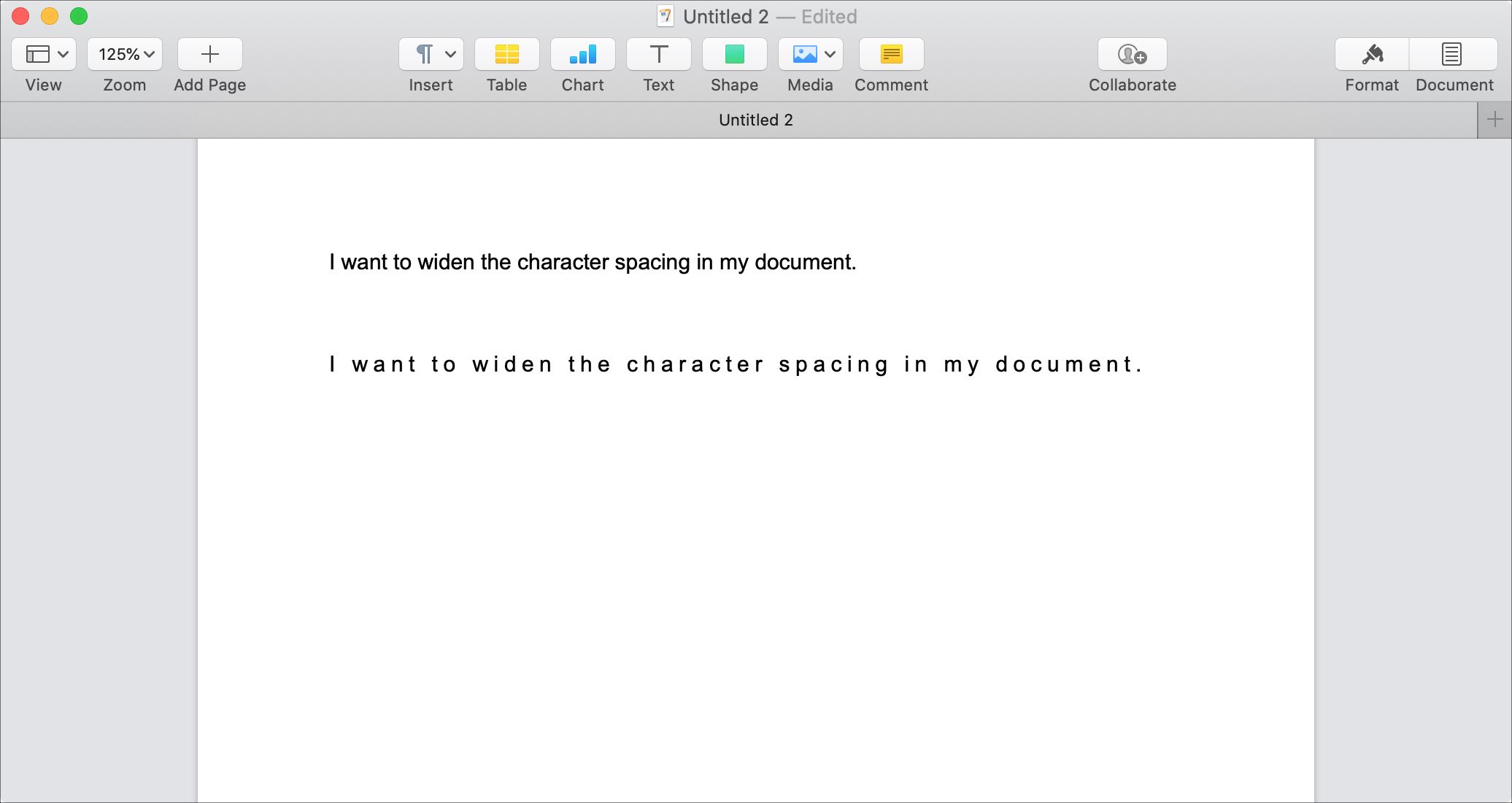

This setting determines the margins for the main body of text on each page of your document.

The first setting is your actual page margin setting. There are actually two-and possibly six-settings at play when Word lays out your text near the bottom of a page.
#ADD SPACING BETWEEN LETTERS IN WORD FOR MAC HOW TO#
She's unclear on how to do this in Word, so is looking for a bit of direction. Adjust the table widths to get neighbors to "play nice." Some tables might need to be widened.īy practicing all three steps, I've created documents whose wrapped tables and wrapped text boxes "play nice" together.Mindy would like to decrease the space that appears between the last line of text on a page and the common text (document title, date, page number, etc.) that appears in her page's footer.

If one table is positioned "Left relative to column," position the next table "Right relative to column." Of course, your carefully laid arrangement can unravel if a new table is inserted or an old table is moved. Under Table Properties > Positioning, stagger (or alternate) the horizontal positioning of neighboring tables. Under Table Properties > Positioning, clear the checkbox "Allow overlap." You've already done that.Ģ. To prevent neighboring wrap-type tables from overlapping, take three steps:ġ. Does anyone have any idea what might be wrong? I didn't make this document, I'm just trying to correct and format it." "F" wrote: "I've deleted any vertical space between the tables, put the positioning on 0 (deleted spacing before/after paragraphs), disabled overlay but they still collide/scale up/go crazy when you try to move them too close to each other. That will only adjust the spacing within the table cell in which the paragraph is located and won't affect the actual space between the table and the surrounding paragraphs. It should be noted that it does no good to try to adjust the spacing of any of the paragraphs within the table, particularly if the table has borders visible. Apply the styles appropriately, and your table should appear "spaced" properly. You can then format the TableAfter style so that the Space Before setting is likewise reflective of the space you want after the table. You could format the TableBefore style so that the Space After setting is however-many points you want to appear between the text and the table. One style would be for the paragraph before the table and the other for the paragraph after.įor instance, let's say you create two styles called TableBefore and TableAfter. If you are using styles, as Anne does, the easiest way to do this is to create two additional styles based on whatever body style you are using in your document.

If you want your table to remain inline, then the proper approach to take is to adjust the spacing on the paragraph immediately before the table and the paragraph immediately after the table. If you need the table to always be after a particular paragraph, then you'll want to check after any heavy editing that it is still where you expect it to be. There is one drawback with this approach: Your table now is treated as an independent element in the document, which means that text can flow around it.


 0 kommentar(er)
0 kommentar(er)
